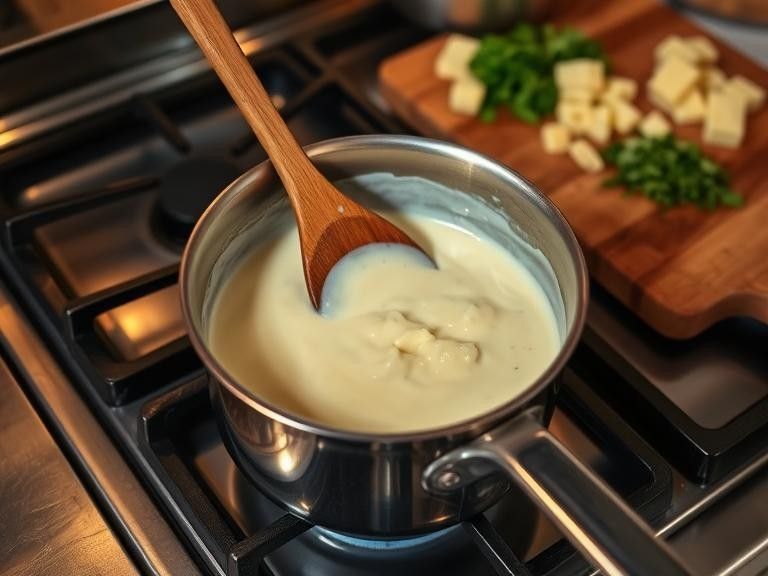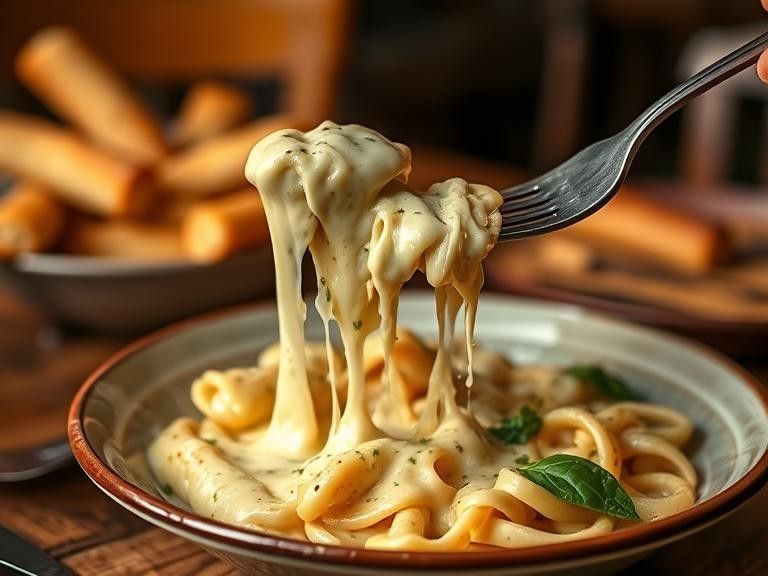A popular artisan cheese, Ballard cheese is prized for its rich, nutty flavor and creamy texture. Making your own Ballard Cheese at home is simpler than you may imagine, regardless of whether you are a cheese lover or a home cook wishing to try something new! Everything you need to know to make a delicious homemade Ballard cheese recipe will be covered in this guide.
Imagine cutting into a wheel of cheese that you manufactured yourself, with every mouthful bursting with the deliciousness of handcrafted, fresh cheese. Making cheese allows you to experiment with flavors, textures, and aging methods because it is both an art and a science. This Ballard Cheese Recipe is a great place to start whether you want to wow your guests at a dinner party or just enjoy a tasty homemade treat.
Why Make Your Own Ballard Cheese?
Making your cheese has a fulfilling quality. It guarantees that the finished product is fresh and free of preservatives, in addition to giving you control over the quality of the ingredients. Plus, when created with passion and patience, homemade cheese always tastes better!
What Makes Ballard Cheese Special?
Made from the best milk, Ballard Cheese has a unique texture and a nuanced flavor profile. It can be eaten by itself, melted into food, or combined with crackers and wine. Ballard cheese is a favorite in many homes because of its versatility.
Ingredients Needed for Ballard Cheese Recipe
Before diving into the process, gather the following ingredients:
- One gallon of fresh whole milk—preferably raw or non-homogenized—is the basis for cheese since it provides the necessary proteins and fats for the curd to form.
- A quarter rennet pill or a quarter teaspoon of liquid rennet aids in the coagulation of milk, turning it into solid curds.
- If using pasteurized milk, add 1/2 teaspoon of calcium chloride to restore calcium balance and enhance curd structure.
- Half a teaspoon of non-iodized cheese salt improves flavor and keeps cheese fresher longer.
- 1/4 cup lemon juice or distilled white vinegar helps to acidify the milk, which promotes the production of curd.
- The introduction of beneficial bacteria into cheese culture (mesophilic culture is favored) affects the cheese’s flavor and texture.
- Rennet and calcium chloride are dissolved in cold water before being added to milk.
Optional Ingredients to Enhance Flavor
- Fresh herbs, such as thyme, rosemary, or chives, give the cheese depth and taste.
- Black pepper or smoked paprika: Adds a spicy or smoky bite for a strong flavor.
- A rich and savory undertone can be added with crushed garlic or onion powder.
- Aged balsamic vinegar or truffle oil adds sophisticated, nuanced flavors to the cheese.
- For those who enjoy a little spiciness, red pepper flakes are added.
Kitchen Equipment You’ll Need
- While heating the milk, a large stainless-steel saucepan helps to avoid reactions with acidic components.
- A cheese thermometer guarantees accurate temperature regulation for the right curd formation.
- A long knife is used to chop the curds uniformly so that the whey drains consistently.
- Cheese mold: It presses out more moisture when shaping the cheese.
- A cheese press, sometimes known as a heavyweight, aids in compacting curds into a solid block.
- Cheesecloth: Maintains the structure of the curd while draining extra whey.
- A colander is used to strain the cooked curds.
- Using a ladle or mixing spoon, gently stir the curds without causing them to break apart too much.
- A wooden board or aging rack allows air to circulate the cheese, promoting healthy drying and aging.

Step-by-Step Instructions for Making Ballard Cheese
Step 1: Heating the Milk
In a stainless-steel pot, start by gradually heating the milk over low heat. Reduce the heat to 86°F (30°C) and stir carefully to prevent burning.
Step 2: Adding Culture and Rennet
Add the mesophilic cheese culture and mix thoroughly once the milk has reached the appropriate temperature. To activate, let it sit for two to three minutes. Next, dissolve the rennet in 1/4 cup of cold water and use an up-and-down motion to whisk it into the milk.
Step 3: Curd Formation
Give the milk around forty-five minutes to rest without being disturbed. A hard curd should start to form. Check to see if the curd breaks cleanly by inserting a knife.
Step 4: Cutting the Curd
Cut the curd into tiny cubes, about 1/2 inch in size, using a long knife. To get more whey out of the curds, let them sit for five minutes.
Step 5: Cooking the Curds
Gently whisk the curds while you gradually heat them to 105°F (40°C). Keep the curds at this temperature for 20 to 30 minutes so they can solidify.
Step 6: Draining the Whey
Transfer the curds to a colander lined with cheesecloth. Give the whey fifteen minutes or so to drain. Keep the whey for baking or other applications, such as soups.
Step 7: Salting and Pressing
Mix thoroughly after adding cheese salt to the curds. Place them in a cheese mold and press for 6–12 hours using 5–10 pounds of weight.
Step 8: Aging the Cheese
After pressing, take the cheese out of the mold and allow it to air dry for one to two days. For optimal flavor, keep it in a cool place and let it age for at least two weeks.

Personal Experience Making Ballard Cheese
Making my own Ballard Cheese was an amazing experience for me as a cheese lover. The first time, I was astounded by how the straightforward procedure turned milk into a flavorful, smooth cheese. To improve the flavor over time, I tried varying the milk sources and maturing periods.
Using fresh, high-quality milk makes a huge difference, I discovered along the road. Starting with high-quality components greatly enhances the texture and flavor.
Best Ways to Enjoy Ballard Cheese
A variety of foods go nicely with homemade Ballard cheese. Here are some suggestions for delectable servings:
- Over a grilled cheese sandwich, melt it.
- Serve with crackers and wine.
- Over handmade pizza, grate it.
- Add it to recipes with creamy pasta.
The Science Behind Cheese Making
Making cheese intriguingly combines chemistry and biology. When rennet and milk are heated together, the casein proteins begin to coagulate and separate from the whey to produce curds. The ultimate texture and flavor of the cheese are influenced by the type of bacterial culture utilized. For instance, Ballard Cheese’s distinctive smoothness and nutty flavor come from mesophilic cultures, which flourish at moderate temperatures. The development of the cheese’s complexity is also greatly influenced by the aging procedure. The natural bacteria gradually break down proteins and lipids, adding depth and richness to the cheese. By being aware of these procedures, you can experiment with various tastes and textures to create a batch of Ballard Cheese that is exclusively yours.
Common Mistakes to Avoid When Making Ballard Cheese
Even skilled cheesemakers encounter difficulties, but avoiding typical mistakes can make all the difference in producing the ideal Ballard cheese. Overheating the milk, which can result in a rubbery texture, is one of the most common errors. The milk should always be heated gradually and steadily. Using ultra-pasteurized milk, which lacks the structure required for appropriate curd production, is another problem. If at all feasible, use raw or lightly processed milk. Additionally, a cheese that is overly soft and crumbly might be produced by omitting the pressing stage or by employing too little weight. A hard yet creamy consistency can be achieved by applying the proper amount of pressure. You can consistently make delicious homemade Ballard cheese by paying attention to these little nuances.

FAQs About Ballard Cheese Recipe
1. What is the duration required to produce Ballard Cheese?
It takes between 24 to 48 hours to complete the full process, including pressing, aging, and preparation. However, you can age it for a few weeks to have a richer, deeper flavor.
2. Can I use store-bought milk to create Ballard Cheese?
Yes, although using raw or non-homogenized milk is preferable. Avoid ultra-pasteurized milk if you are using pasteurized milk because it does not form curds correctly.
3. How should homemade Ballard cheese be stored?
Store it in the refrigerator after wrapping it in wax paper or cheese paper. Although it can last longer if aged properly, it is best consumed within two weeks.
4. What is the flavor of Ballard Cheese?
It has a smooth texture and a flavor that is creamy and somewhat nutty. It can develop sharper notes as it ages, making it suitable for a variety of recipes.
5. Can I season the cheese with herbs or spices?
Absolutely! Adding truffle oil, smoky paprika, garlic, or chives can enhance the flavor and provide a unique touch to your cheese-making process.
Conclusion
It is fun and satisfying to make your own Ballard Cheese Recipe at home. You can produce a fresh, delectable cheese that surpasses store-bought alternatives if you have the correct components and patience. Savor the deep tastes of homemade artisan cheese by giving this recipe a try today!

